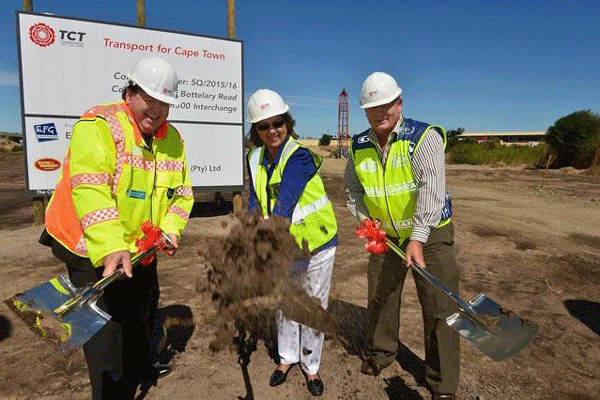
In March, the South African National Roads Agency (SOC) Limited officially opened the new Bottelary/R300 interchange, a year after breaking ground.
This was done in partnership with the Western Cape government and the City of Cape Town.
The R100-million project was prioritised to alleviate congestion and the frustration endured by thousands of motorists in Kuils River, Brackenfell, and surrounds.
The City, province, and SANRAL, who purchased the land for the construction, each contributed one third of the project value. SANRAL will maintain the road going forward.
Cape Town executive mayor Patricia De Lille said: “I would like to say thank you to our partners, the Western Cape department of transport and public works and SANRAL Western Cape, for working with us to deliver this massive project in such a short space of time.
“This project has confirmed how partnerships are vital to achieving progress and responding to the needs of our citizens in ways that benefit and connect them to economic opportunities.”
Western Cape minister of transport and public works Donald Grant also praised the team for completing the project on schedule and within budget.
Alternatives to alleviate congestion
Cape Town is the most congested city in South Africa, which is why the government has developed an extensive congestion strategy that promotes the adoption of flexible working hours for people making their daily commute from the suburbs to the Cape Town CBD, the use of reliable public transport alternatives like the BRT system, carpooling and working from home, where possible.
The city and the province are leading by example – piloting the flexible working hours with their staff, in a bid to reduce congestion.
SANRAL western region manager Kobus van der Walt commended this progressive approach.
“Building roads is core to what we do at SANRAL. However, there’s so much more to it. If our road infrastructure is to fit into the concept of smart cities, citizens must take some of the responsibility,” he said. “Travel demand management needs to enter the discussion.
“To really get maximum value from our road network, we as citizens need to manage the demand on our resources. The solution to congestion needs a change in mindset and a willingness to compromise and contribute, share resources and be open to alternatives.”
SANRAL remains committed to ongoing engagement and collaboration with the provincial and local governments to ensure that the infrastructure it rolls out enables citizens to access economic opportunities in our cities.
The National Development Plan (NDP)
SANRAL enhances South Africa’s National Development Plan’s (NDP) ambition to have an efficient, competitive and responsive infrastructure network.
The NDP, also known as Vision 2030, seeks to eliminate poverty and reduce inequality by 2030. According to the plan, South Africa can realise these goals by drawing on the energies of its people, growing an inclusive economy, building capabilities, enhancing the capacity of the state, and promoting leadership and partnerships throughout society.
With the NDP in mind, the construction of the new Bottelary Road/R300 interchange in Kuils River, will make it easier to travel to and from Stellenbosch, the N1, N2 and the airport.

